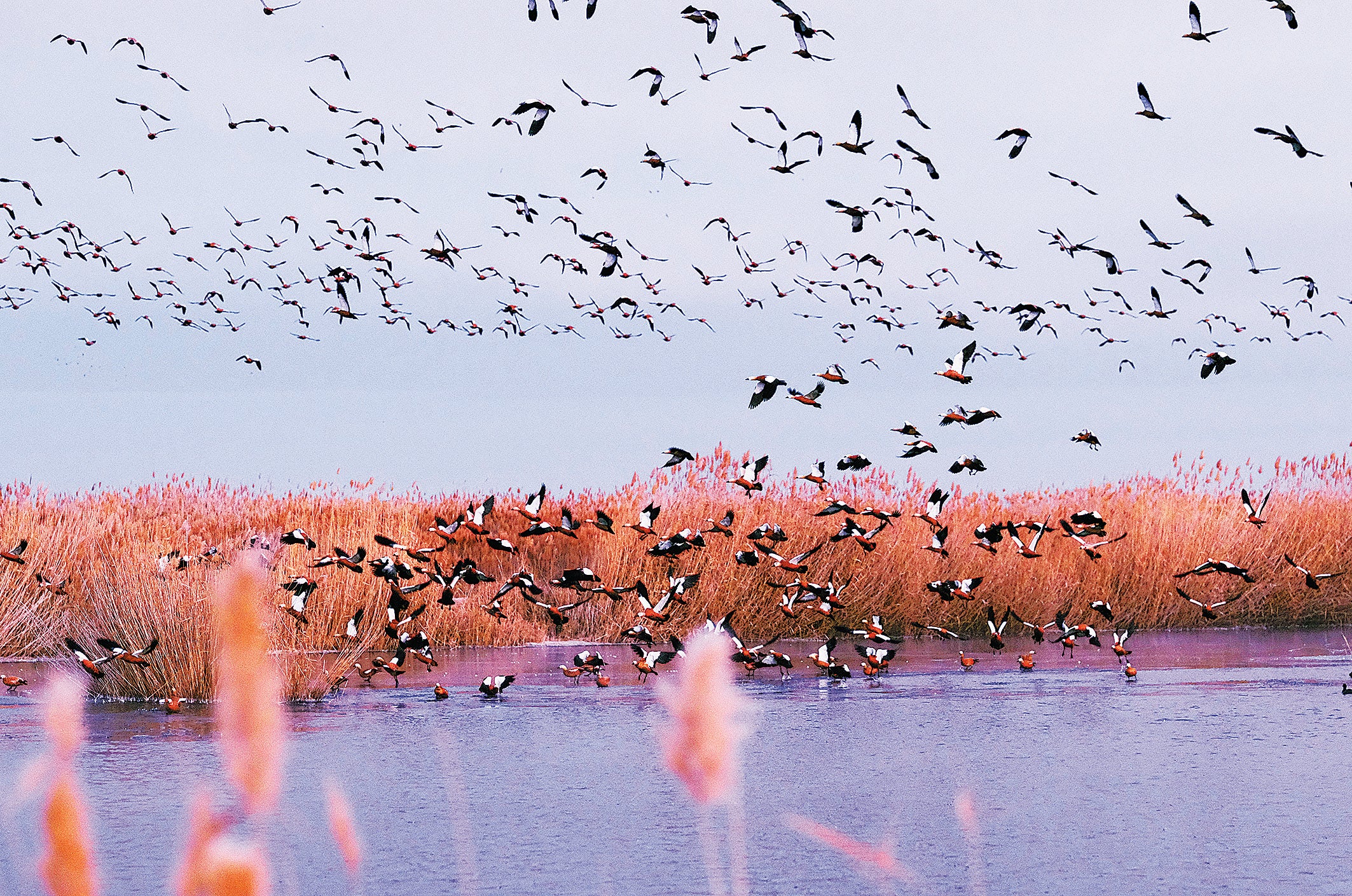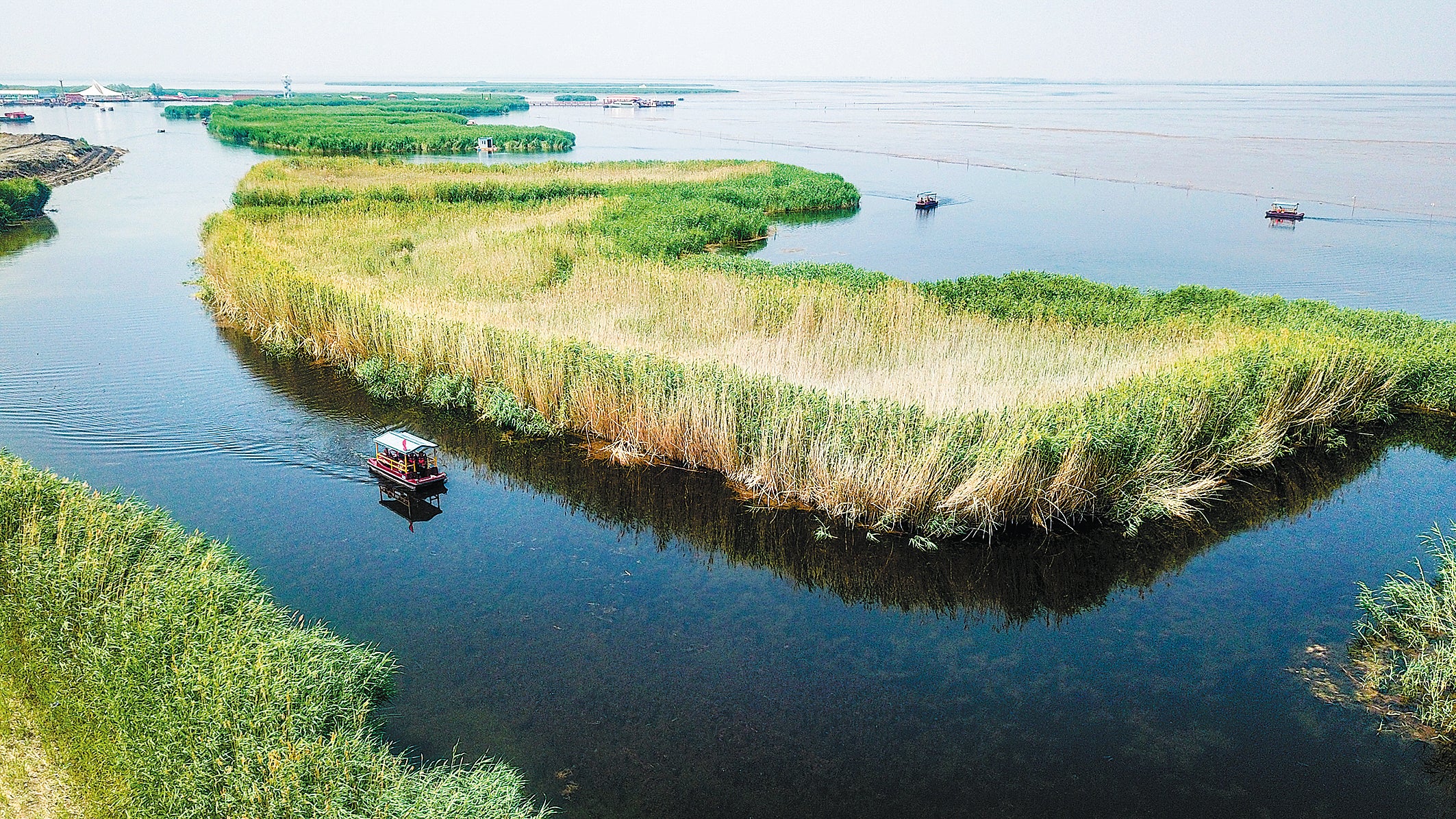Wildlife returns to famous lake in wake of clean-up
THE ARTICLES ON THESE PAGES ARE PRODUCED BY CHINA DAILY, WHICH TAKES SOLE RESPONSIBILITY FOR THE CONTENTS

In the 1950s, Liu Wenbin’s father relocated more than 497 miles from his famine-plagued hometown in Hebei province. He settled near Ulansuhai Nur, a famous lake in the Inner Mongolia autonomous region, attracted by the area’s reputation as a land of fish and rice.
For years, the fishing industry was a reliable source of income for Liu’s family. “When I was a child, we always came back from fishing with the boat full of our catch, accompanied by flocks of birds,” the 53-year-old recalled.
However, as urbanisation and industrialisation accelerated around the lake in the 1990s, Liu witnessed the body of water turn into a black and odorous mass that local people avoided as much as possible.
Now, with a treatment campaign, the local government has made marked progress in just a few years, rejuvenating the lake as a paradise for birds and raising Liu’s hopes of seeing the return of the Ulansuhai Nur of his childhood.
Located in Bayannuur in the west of the region, Ulansuhai Nur is home to the largest wetland in the Yellow River Basin and a rare large grassland lake in the desert and semidesert area.
It is also an important node on the world’s eight major bird migration routes, and is one of the world’s few avian transit and breeding grounds in the desert and semi-desert areas.
When Liu, now an official with the Ulansuhai Nur administration, recalled his childhood, he described the lake as a consistent source of joy for him and his peers. However, he saw the “fabulous environment” of the water begin to deteriorate in the 1990s.
The worst situation Liu can recall in Ulansuhai Nur came in 2008, when the lake was hit by an outbreak of algae which depleted the oxygen levels in the water. “The entire surface of the lake was blanketed by yellow algae. From a distance, it looked like a desert,” he said.
In response, the central authorities paid great attention to the worsening environmental situation at Ulansuhai Nur. In 2019, the Ulansuhai Nur Basin was chosen by the ministries of finance, natural resources, and ecology and environment to pilot a holistic conservation programme and systematic governance of all types of terrain.
According to a report by Xinhua News Agency the same year, the total planned investment for the pilot project totals 5.6 billion yuan (£612 million).
Key programmes include the control of desertification, remediation of former mining areas, conservation of soil and water, protection of biodiversity and control of agricultural pollution, and the restoration of connectivity between different bodies of water.
For example, in the Hetao irrigation area, local authorities have rolled out a campaign that is designed to control the use of chemical fertilisers, pesticides, water and mulching film, according to the Bayannuur government.

In the Ulan Buh Desert, the country’s eighth-largest arid area, which is located in the upper areas of Ulansuhai Nur, a number of projects have been launched that sustainably integrate desert control, solar energy generation and the development of agriculture.
For example, under the programme, herbs are planted beneath solar panels. In Dengkou county, most of which is covered by the desert, the construction of a base that follows the model commenced in April last year.
With 740,000 solar modules, the base is expected to generate 726 million kilowatt-hours of electricity a year and produce herbs worth 30 million yuan (£3.3 million), while greening 3.1 square miles of desert, the Dengkou government said.
According to the Bayannuur government, the number of birds around Ulansuhai Nur has risen, with 264 species monitored at the lake recently, compared with 185 in 2000, it said. The number of mute swans living around the body of water has climbed to more than 800 from roughly 200 in 2000.
Liu, the official with the Ulansuhai Nur administration, said he has found that swan geese, which disappeared from the lake as its environment deteriorated, are now returning in large numbers, indicating that the environment has greatly improved.

Bookmark popover
Removed from bookmarks